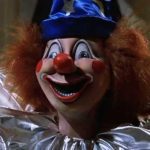 Our World
Our World  Our World
Our World  Weird Stuff
Weird Stuff 10 Fascinating Facts You Might Not Know About Snow
 Miscellaneous
Miscellaneous Top 10 Things Crypto Was Supposed to Change & What Actually Did
 History
History 10 Huge Historical Events That Happened on Christmas Eve
 Music
Music 10 Surprising Origin Stories of Your Favorite Holiday Songs
 History
History 10 Less Than Jolly Events That Occurred on December 25
 Weird Stuff
Weird Stuff 10 Funny Ways That Researchers Overthink Christmas
 Politics
Politics 10 Political Scandals That Sent Crowds Into the Streets
 Weird Stuff
Weird Stuff Ten Bizarre Facts About The Doge Meme
 Our World
Our World 10 Ways Your Christmas Tree Is More Lit Than You Think
 Our World
Our World 10 Archaeological Discoveries of 2025 That Refined History
 Weird Stuff
Weird Stuff 10 Fascinating Facts You Might Not Know About Snow
 Miscellaneous
Miscellaneous Top 10 Things Crypto Was Supposed to Change & What Actually Did
Who's Behind Listverse?

Jamie Frater
Head Editor
Jamie founded Listverse due to an insatiable desire to share fascinating, obscure, and bizarre facts. He has been a guest speaker on numerous national radio and television stations and is a five time published author.
More About Us History
History 10 Huge Historical Events That Happened on Christmas Eve
 Music
Music 10 Surprising Origin Stories of Your Favorite Holiday Songs
 History
History 10 Less Than Jolly Events That Occurred on December 25
 Weird Stuff
Weird Stuff 10 Funny Ways That Researchers Overthink Christmas
 Politics
Politics 10 Political Scandals That Sent Crowds Into the Streets
 Weird Stuff
Weird Stuff Ten Bizarre Facts About The Doge Meme
 Our World
Our World 10 Ways Your Christmas Tree Is More Lit Than You Think
10 Eerie Tales From Behind The Scenes Of Rosemary’s Baby
Roman Polanski’s 1968 psychological horror film Rosemary’s Baby remains one of the creepiest and most influential horror movies ever made. The tale of Rosemary Woodhouse, a young woman who gets pregnant under seriously suspicious circumstances, still gives viewers chills decades later. But here’s the thing, as unsettling as the movie itself is, the real-life events surrounding its production might be even more disturbing. From bizarre tragedies to weird coincidences, the making of Rosemary’s Baby was wrapped in strange occurrences that have fueled speculation about a possible curse. Between the Dakota building’s spooky history, personal tragedies for cast and crew, and some genuinely disturbing production details, there’s a whole layer of creepiness that goes beyond what ended up on screen.
10Mia Farrow Walking Into Real Traffic
In one of the movie’s most genuine moments of anxiety, director Roman Polanski actually had Mia Farrow walk into real oncoming New York City traffic. In her autobiography What Falls Away, Farrow revealed that Polanski just shrugged and said “nobody will hit a pregnant woman.” Those honking horns and screeching brakes you hear? Totally real, just actual New Yorkers freaking out as Farrow wandered into the street. Talk about blurring the line between acting and actual danger.
9The Mysterious 666 Connection
The script sneaks in a chilling detail that most viewers miss. According to the novel and the script, Rosemary’s baby was due in June 1966, or 6/66. This connection to 666, the infamous “number of the beast,” wasn’t accidental. It’s there in the film as a creepy little Easter egg for anyone paying close attention. The devil really is in the details.
8The “Curse” Claims Its First Victims
Not long after the film hit theaters, whispers of a curse started spreading when several people connected to the movie ran into trouble. Producer William Castle ended up hospitalized after receiving threatening letters from religious groups outraged by the film. But the truly tragic case involved composer Krzysztof Komeda, who created that haunting lullaby you can’t get out of your head. Less than a year after release, Komeda died at just 37 following a freak accident at a party in the Hollywood Hills. According to Polanski, Komeda had been drinking heavily when he fell. His untimely death became the first in a series of incidents that had people wondering if something darker was at play.
7Frank Sinatra’s On-Set Divorce Papers
While filming, Mia Farrow was dealing with some serious personal drama alongside her demanding role. Her marriage to Frank Sinatra was falling apart, largely because he wasn’t thrilled about her growing acting career. In what must have been an absolutely brutal moment, Sinatra had divorce papers delivered to Farrow right on the set of Rosemary’s Baby. Talk about terrible timing, she’s playing a character going through psychological hell while dealing with her real marriage imploding. Farrow later said Sinatra expected wives to stay home rather than pursue careers, basically forcing her to choose between her marriage and her work. Method acting through real-life heartbreak? Ouch.
6Raw Chicken Livers and Method Acting
Remember that gross scene where Rosemary eats raw meat because she thinks it’ll help her pregnancy? Well, Mia Farrow, a committed vegetarian, actually ate real raw chicken livers during filming. That’s some serious dedication to the craft. According to her memoir, eating the raw meat was absolutely revolting to her, which means that disgust you see on screen is 100% authentic. Sometimes the best acting isn’t acting at all.
5The Dakota’s Dark History
That iconic New York apartment building used for the exterior shots, the Dakota, has its own history of tragedy and supposed hauntings. Most famously, it would later become the spot where John Lennon was murdered in 1980, more than a decade after the film’s release. The Dakota has long been rumored to house spirits, with numerous ghost sightings including a “crying lady” and even Lennon’s ghost. With its Gothic architecture and reputation for paranormal activity, you couldn’t ask for a better real-world setting for a story about devil worshippers. Sometimes life is creepier than fiction.
4Dangerous Filming Conditions
That opening sequence with the panoramic view of the Dakota? To get that shot, cinematographer William Fraker and crew had to build a sketchy platform jutting out from the building’s roof. Safety standards were pretty lax back then, so they basically dangled cameras and themselves high above Manhattan with minimal protection. Fraker later described how nerve-wracking it was capturing those establishing shots. “It required creating an extended platform to safely capture the perspective,” Fraker noted, though “safely” was a pretty generous description given the era’s casual approach to not dying on set.
3The Manson Murders Connection
Probably the most disturbing connection to Rosemary’s Baby came in August 1969, when the Manson Family murders sent shockwaves across America, with a horrific personal connection to director Roman Polanski. While the film was still playing in some theaters, cult leader Charles Manson orchestrated the brutal murders of several people, including Polanski’s pregnant wife, Sharon Tate. The savage nature of these killings, with their cult undertones, created an awful parallel to the film’s themes. The timing was chilling: a movie about Satanic cults threatening a pregnant woman followed by real-life cult violence against the pregnant wife of the filmmaker. This ghastly coincidence added yet another shadow to the film’s already dark legacy.
2The Phone Number That Spells “HELL”
In a scene where Rosemary frantically calls her doctor, the numbers she mouths while using the rotary phone, when flipped upside down, spell out “HELL.” This subtle visual trick was deliberately planted by Polanski as a subliminal message, something most viewers wouldn’t consciously catch but might register subconsciously. Little hidden messages like this were scattered throughout the film to make viewers uneasy without explicitly showing anything supernatural for most of the runtime. Pretty clever psychological manipulation, if you ask me.
1The Missing Baby
In the film’s most notorious scene, Rosemary discovers her baby and reacts with horror. Interestingly, we never actually see the infant, we only experience the moment through Farrow’s performance. What’s especially weird is that cinematographer William Fraker showed up expecting to film a close-up of the demonic child. “When are we going to shoot the close-up of the baby?” Fraker asked, only to have Polanski firmly respond: “No, there will be no baby.” This decision forces viewers to imagine something far worse than any 1960s special effect could create. Polanski clearly understood that real horror happens in the viewer’s imagination. Sometimes what you don’t see is way scarier than what you do.








